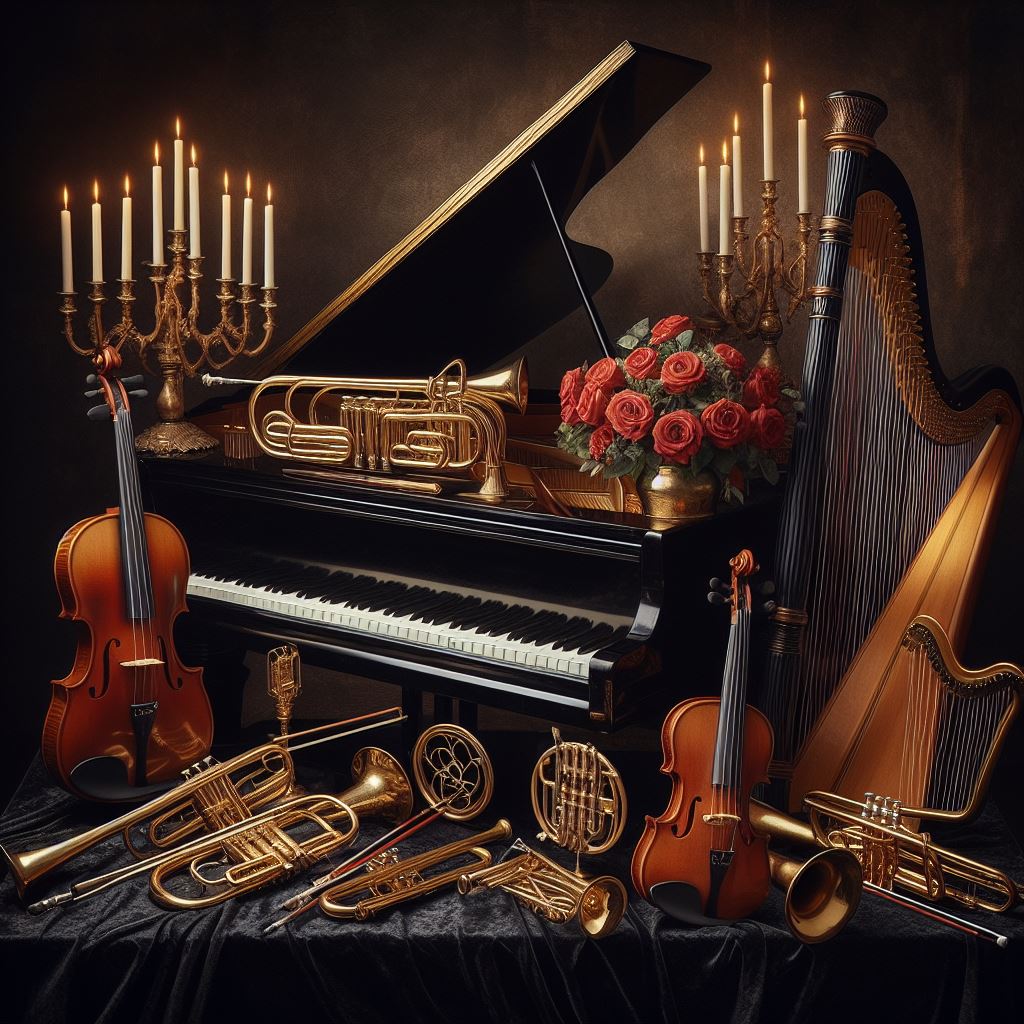
Classical music, with its vast history and intricate compositions, has always had the power to transport listeners to different emotional and mental landscapes. For centuries, composers and musicians have explored various sounds and textures to express the ineffable. Integral to this exploration are the instruments themselves, some of which are so unconventional, they seem to come from a different world altogether. From the ethereal glass harmonica to the sci-fi-inspired theremin, get ready to discover the peculiar backstories and sonic capabilities of classical music’s most unconventional instruments.
Glass Harmonica
The glass harmonica, an instrument that seems plucked from the pages of a fairy tale, holds an intriguing allure. Invented by Benjamin Franklin in 1761, its ethereal resonance captivates listeners to this day. Imagine a series of glass bowls, each meticulously tuned to a specific pitch, arranged on a spindle. Musicians delicately moisten their fingers and glide them across the bowls’ edges, producing hauntingly beautiful melodies that evoke a celestial realm.
This instrument’s enigmatic quality has inspired composers across centuries, including the likes of Mozart and Beethoven. Its unique sound, both enchanting and mysterious, adds a touch of the otherworldly to musical compositions. Despite its simple construction, the glass harmonica possesses a profound ability to transport listeners to realms of imagination and wonder.
Benjamin Franklin’s creation remains a testament to human ingenuity and the endless possibilities of musical expression. From its humble beginnings, the glass harmonica has woven itself into the fabric of classical and contemporary music, leaving an indelible mark on the sonic landscape. Its haunting melodies continue to mesmerize audiences, inviting them to explore the depths of sound and emotion through its shimmering resonance.
Theremin
The thereminb defies conventional notions of musical interaction by enabling players to produce ethereal sounds without physical contact. Conceived by Léon Theremin in the early 20th century, this instrument entrances audiences with its haunting, voice-like tones, manipulated solely by the movements of the player’s hands in proximity to its antennas.
One antenna governs pitch modulation, while the other regulates volume, imbuing the theremin with a mesmerizing interplay of control and precision. Beyond its musical functionality, the theremin captivates as a spectacle of technical mastery and expressive potential.
Its versatility is showcased across diverse musical domains, from classical compositions to the evocative soundscapes of science fiction cinema. Through its ethereal timbres and otherworldly resonance, the theremin enriches musical compositions with a unique and enigmatic allure, transcending the boundaries of traditional instrumentation.
As an emblem of technological ingenuity and artistic exploration, the theremin continues to captivate and inspire audiences worldwide, its electronic sway serving as a testament to the boundless possibilities of human creativity in the realm of sound.
The Ondes Martenot
The Ondes Martenot, akin to the theremin, stands as a pioneering electronic instrument in the realm of classical music. Conceived by Maurice Martenot in 1928, its innovation aimed to emulate the expressive qualities of the human voice. Featuring a keyboard reminiscent of a piano, the Ondes Martenot distinguishes itself with a wire manipulated by the player, along with a ring, facilitating the creation of fluid, gliding notes akin to the theremin’s technique.
Renowned composers like Olivier Messiaen have harnessed the instrument’s ethereal timbre, incorporating its haunting soundscape into classical compositions. This utilization underscores the instrument’s capacity to evoke profound emotional depths within orchestral arrangements, reaffirming the legitimacy of electronic instruments in traditional musical contexts.
The Ondes Martenot’s emergence marked a significant milestone in the evolution of musical instrumentation, bridging the gap between classical tradition and contemporary innovation. Its ability to infuse compositions with a mystical quality has cemented its status as a cherished component of the orchestral repertoire, enriching performances with its distinctive resonance. As technology continues to shape musical expression, the Ondes Martenot serves as a testament to the enduring allure of innovation within the classical canon.
The Hurdy-Gurdy
This stringed instrument dates back to medieval Europe and produces sound by a hand-cranked wheel rubbing against the strings, much like a violin’s bow. What sets the hurdy-gurdy apart is its capability to produce a continuous drone sound while the melody is played on keys that press tangents against one or more of the strings.
The hurdy-gurdy holds a peculiar place in music history; it was popular among both common folk and nobility in the Middle Ages but fell out of favor in the classical period. Fortunately, there’s been a resurgence of interest, with the hurdy-gurdy making appearances in modern classical compositions, folk music revival, and even soundtracks for video games and movies, captivating listeners with its unique, droning melody.
The Octobass
The octobass, a marvel of acoustic instrumentation, transcends the ordinary with its sheer magnitude and peculiarity. Imagine an instrument so colossal that it dwarfs its player, necessitating the use of levers and pedals for manipulation. The octobass exists as a tangible reality, engineered to produce tones lower than those attainable by a double bass, delving into depths that resonate more as physical sensations than audible frequencies.
Its sonorous presence yields a formidable and resonant sound, furnishing orchestral compositions with a profound vibrational undercurrent unattainable by conventional instruments. While its enormity and intricacy render it a rarity, its appearance on stage leaves an indelible impression on both the music and its audience.
The is a boundless ingenuity and innovation within the realm of acoustic music. Its capacity to evoke primal depths and enrich musical arrangements with its unparalleled resonance underscores its significance as a unique and cherished component of the orchestral ensemble. In the hands of adept musicians, the octobass becomes more than a mere instrument; it becomes a conduit for transcendent sonic experiences, elevating compositions to new heights of auditory wonder.
